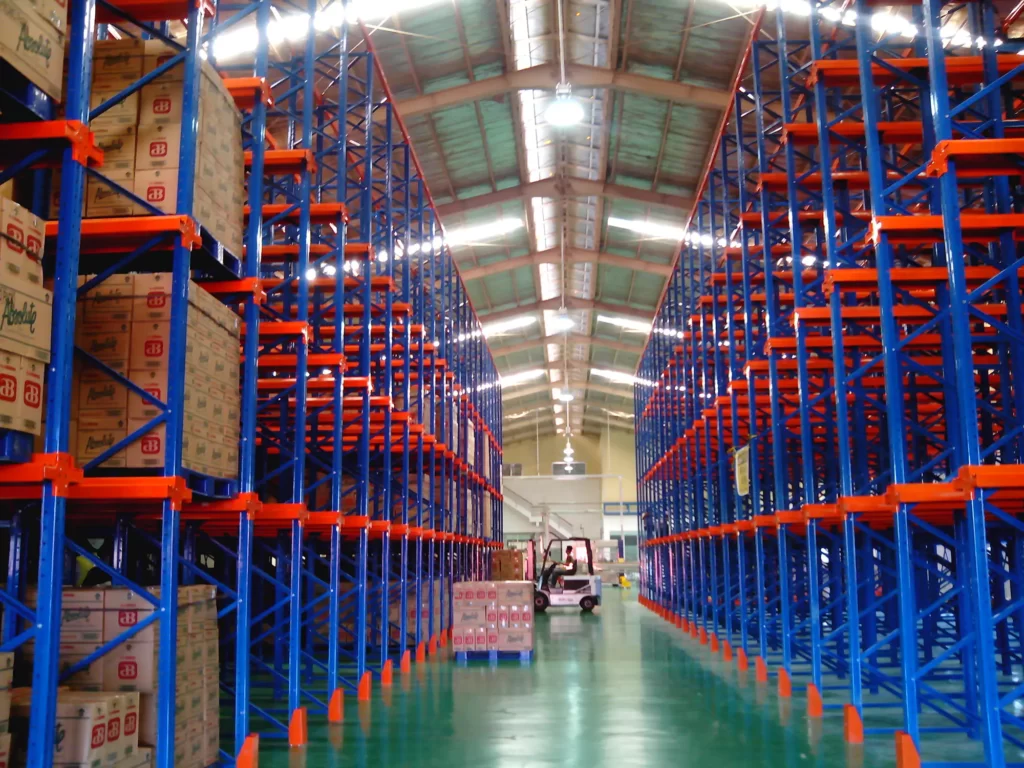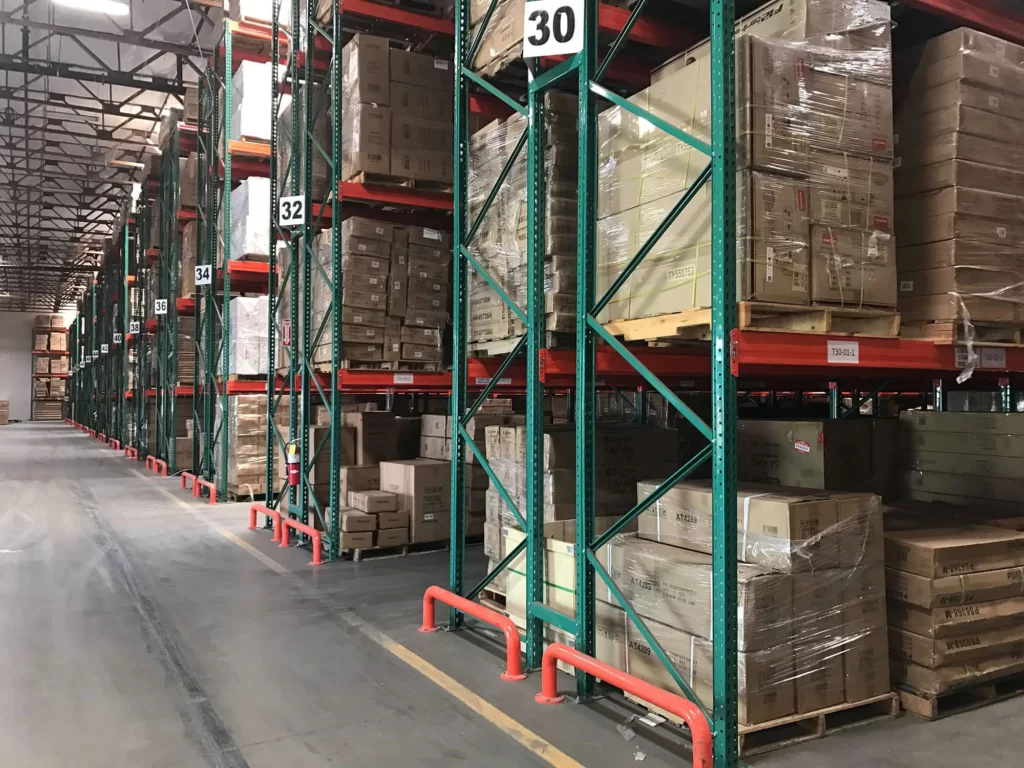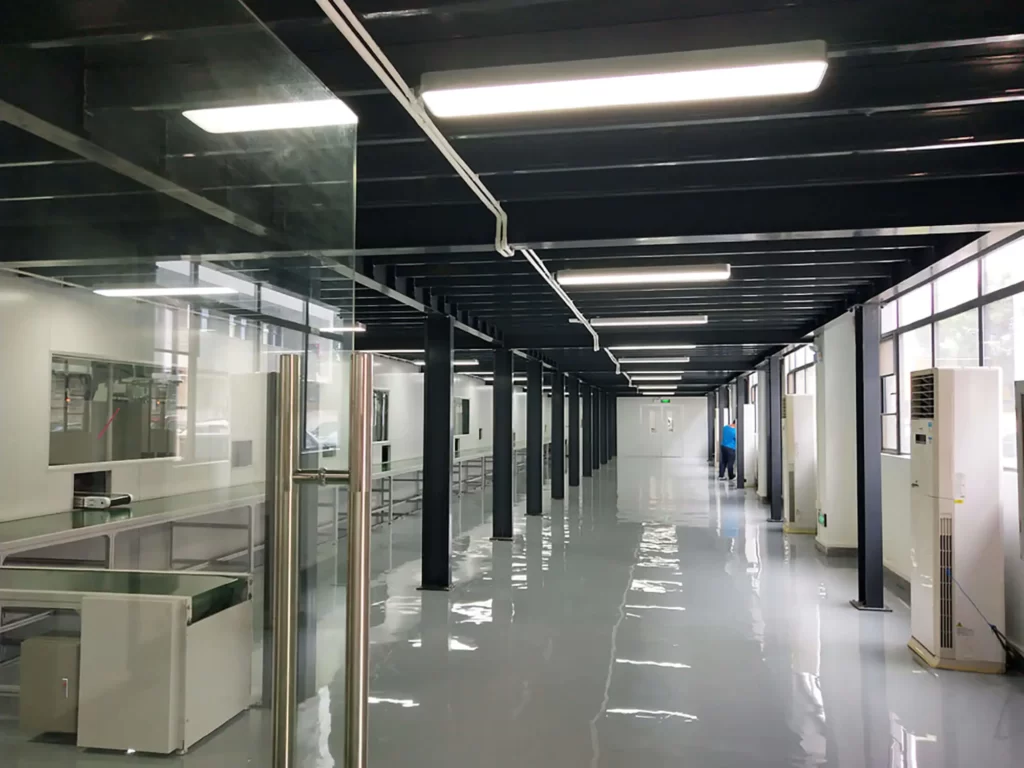In 2023, automated systems are already in widespread use. Industrial robots and automated equipment are being used in more processes. Fully automated warehouses are becoming more common. Today we will discuss in great detail the topic, “What is automated warehouse?”
To be flexible and modern, businesses are employing these cutting-edge solutions. They are adapting warehouse management systems. There are various types of warehouse storage solutions like pallet racking, mezzanine floors, etc.
Among the warehouse storage solutions, there are automated warehouse storage solutions. Using automated warehouse solutions can make various tasks in the warehouse much easier.
Additionally, using automated warehouse solutions also ensures faster loading and unloading of tasks. It also helps to avoid order errors and increases profitability in the long run. To keep pace with the modern world, automated warehouse solutions are a perfect choice.
In this article, we will discuss the following things:
Definition Of Automated Warehouse System.
In an automated warehouse, a sizable amount of warehousing tasks are carried out automatically by machinery, electronic equipment, and robots. These are tasks including material handling, storage, retrieval, and transportation.
These automated solutions are intended to increase warehouse operations’ accuracy and efficiency. They also decrease mistakes and personnel expenditures. For warehouse space utilization, the automated warehouse is an excellent choice.
A warehouse employee might put large products onto an autonomous mobility robot. The software tracks the movement of the inventory as it is moved by the robot from one end of the warehouse to the shipment zone.
This also keeps an updated record. These robots increase this task’s effectiveness, swiftness, dependability, and precision.
Automated warehouses offer several advantages over traditional, manually-operated warehouses. Automated systems might have a high initial investment but it pays off.
Automated warehouses require less human labor compared to traditional warehouses. While choosing and manipulating items, it is also more precise than human employees. Automated warehouses may run continuously without requiring human labor.
Space can be used more effectively in automated warehouses than in conventional warehouses. ASRS systems may store items in a smaller space than conventional storage method like pallet racks.
Benefits Of Automated Warehouse System.
A warehouse can automate labor-intensive activities including data entry, and repetitive physical labor to minimize costs. Now, let’s discuss the benefits of having an automated warehouse in great detail:
Reduces The Labor Cost
In this system, warehouse management is mostly done automatically. This reduces the need for labor in the warehouse. For developed countries like the USA and Canada, where the labor cost is $15 per hour, transitioning to an automated warehouse can save a lot of money.
Works With Precision And Accuracy
Automated warehouse systems can work with 100% accuracy and precision in a warehouse. It can do things like picking products, and loading and unloading tasks with 100% accuracy.
Increases The Profitability In The Long Run
The initial investment in the automated warehouse is higher. However, reduced labor costs increase the profitability of a warehouse in the long run.
Having an automated system also ensures better space utilization in the warehouse. When compared to facilities that need enough aisle width for forklifts and human workers to pass through, most automated systems can work on narrower aisles.
Narrower aisles allow warehouses to store more products without having to enlarge the facility by creating extra storage space for goods.
Automated systems like ASRS can more easily access higher storage sites than human workers. As a result, it facilities greater use of vertical space.
So, better use of existing space also increases profitability in the long run.
Faster Completing Of Warehouse Tasks
Another amazing benefit of having an automated warehouse system is that it can complete tasks faster. For instance, if you install the ASRS racking system, it can complete the loading and unloading of products faster than traditional warehouse racking systems.
Safety And Security
When human workers work in a warehouse, there is always a chance of injury or damage to goods. These injuries or damage can have financial consequences for the warehouse owners.
If the warehouse is switched to automated systems, then these types of incidents can easily be avoided. Also, in an automated warehouse system, it can also move items that are too large for humans to carry.
Keeping Ahead Of The Competitors
You can be ahead of your warehouse competitors in terms of accuracy, precision, speed, and profitability; by installing an automated warehouse system.
Components Of Automated Warehouse System.
There are several components that make up automated warehouse work. Some of these components are:
- ASRS system
- Robotics
- Conveyor systems
- Barcoding and RFID
- IoT sensors
- Automatic packaging and labeling systems
ASRS Systems
Automated Storage and Retrieval Systems are automated systems. These are designed for the storage and retrieval of goods in a warehouse.
This automated system typically consists of a series of racks to store goods. A computer-controlled mechanism that retrieves and delivers the materials to a designated location.
The ASRS system stores the materials in a predetermined location based on the material’s characteristics, such as weight, size, and quantity. When a customer places an order, the ASRS system retrieves the materials from the designated storage location.
It uses a robotic crane or pallet shuttle system. The system then moves the materials to a central location, where they can be picked for shipping. The ASRS system can transport materials within the warehouse using a conveyor system.
There are also different types of ASRS systems. It depends on the management system of your warehouse, the goods stored, and the company’s needs. Compared to conventional warehouse storage systems, ASRS systems provide a number of benefits.
Robotics
Robotics and the use of artificial intelligence are the keys to automating the warehouse in the future. Robotics play a critical role in the operation of automated warehouses.
In an automated warehouse, robots are used to perform a variety of tasks. They can handle materials, manage inventory, and also do picking and packing.
You can significantly raise your percentage of on-time deliveries and reach more objectives if you can load, sort, and pack merchandise more quickly. Robots may also take care of normal maintenance jobs including lubricating, cleaning, and inspecting warehouse equipment.
Automated guided vehicles and automated mobile robots also called mobile robots. Both AGVs and AMRs can help increase efficiency and productivity in an automated warehouse.
AGVs are self-guided vehicles that are used to transport materials within a warehouse. They are equipped with sensors that allow them to follow a pre-programmed path and avoid obstacles.
Similar to AGVs, AMRs have more sophisticated sensors and algorithms that enable them to negotiate more challenging settings. These can be utilized in a warehouse for order picking, material handling, and other jobs.
Conveyor Systems
Several automated warehouses depend heavily on conveyor systems. They are utilized to move goods, resources, and packages from one place to another. They may be set up to transport objects in many different ways, such as horizontally, vertically, and even around corners.
Barcoding & RFID
For inventory management and tracking, automated warehouses frequently employ the technologies of barcoding and RFID. Companies may gain better insight into the quantities and movements of their inventory by employing these solutions.
Moreover, it aids in mistake reduction and warehouse performance enhancement.
A set of bars and gaps with variable widths that represent data are used in barcoding to identify goods or commodities. Typically, barcodes are printed on labels that may be affixed to goods, pallets, or storage areas.
Data is read from and sent to a computer system when a barcode is scanned. It can then initiate automated warehouse procedures or update inventory data.
The technology known as radio frequency identification, or RFID, is also utilized in warehouses. To transport data to or between digital tags or labels, RFID employs radio waves.
RFID tags contain a microchip and an antenna that can transmit data to an RFID reader when they come within range. RFID tags can be attached to products, pallets, or storage locations. They can be read from a distance without requiring line-of-sight access.
IoT Sensors
The Internet of Things or IoT sensors is becoming increasingly common in automated warehousing. IoT sensors can be used to track a wide range of information, including inventory levels, equipment performance, and environmental conditions.
To collect and exchange data, IoT links gadgets like headphones, wearables, and mobile devices. IoT devices have the ability to synchronize, monitor, detect, and receive data. Better inventory control, on-time delivery, warehouse productivity, and other advantages are also present.
Automated Packaging & Labeling Systems
Products are packaged by machines, such as stuffing them into boxes or bags, in automated packaging systems. Labels can be printed and applied automatically to items, pallets, or storage sites.
Systems for automatic packaging and labeling make it possible to accurately and efficiently package and label items. Robotic case packers can effectively pack cases in lieu of people and less dependable mechanical case packers.
Applications Of Automated Warehouse System.
An automated warehouse may be useful for many different sorts of enterprises in many different sectors. any company that manages its inventory well or deals with a high amount of items. Some of the industries that would benefit from this are:
- E-commerce
- Automotive Business
- Healthcare industry
- Retail
- Manufacturing
E-commerce
The implementation of automated warehousing systems will be more crucial as e-commerce develops further. E-commerce companies may run more effectively, cut expenses, and increase customer happiness by implementing warehouse automation.
Automated warehousing solutions can cut down on the amount of manual labor required for order fulfillment. With the use of automation, e-commerce companies are able to manage their inventories more effectively while lowering the danger of stockouts and overstocks.
Automation can increase efficiency and accuracy and help businesses to grow. It can streamline the picking, packing, and shipping processes, enabling e-commerce businesses to process orders more quickly and accurately.
Healthcare Industry
Healthcare organizations deal with a vast variety of medical goods, including anything from medications to surgical equipment. Automated warehouses may aid in the safe management of these goods, as well as eliminate errors and increase inventory count accuracy.
Medical supply traceability may be enhanced by the use of automated systems like barcoding and RFID. They may be traced in this way from receipt to use. Ensuring that medical supplies are available when needed, enhances patient care.
Retail
Automated storage technologies will make it easier for merchants to meet demand and compete in the market. By enabling quicker delivery times, automated solutions can assist shops in providing a better customer experience. Also, it increases order fulfillment accuracy.
Retailers may save money as a result of the reduced requirement for physical labor during the order fulfillment process. This makes for better inventory management and may increase profitability.
Automotive Industry
Since they lower the likelihood of accidents, automated systems can contribute to increased safety in the automobile sector. It lessens the need for physical labor, which lowers expenses and makes it possible to invest in different parts of the company.
Manufacturing
Automating the warehouse may speed up operations for manufacturers. By promptly delivering resources and components to the production line, it helps shorten the production cycle. Manufacturers can assure constant quality control with the use of automated technologies.
Challenges In An Automated Warehouse Storage Solution.
As there are benefits of automated warehouse systems, there are also lots of challenges.
High Initial Cost
The high initial cost of an Automated warehouse system makes it impossible for small businesses to install this system.
On average, the cost of an automated warehouse system is 5 to 6 times higher than traditional pallet racking costs. So, in spite of having so many advantages, most warehouses simply can not afford an automated system.
Needs Skilled And Expert People To Run This System
We know that by installing this system, the dependency on labor decreases to a great extent. However, to run the automated system smoothly, you need highly skilled people to properly run this system.
Not Suitable For Warehouses That Manages Different Products In Different Times
Because of the downtime needed to re-program and re-train the automated system to transport new items after each transition, they are not suited for applications in which various types of products are managed at different times.
For instance, a warehouse that manages various goods in different seasons, an automated warehouse system is not suitable for it.
Maintenance Cost
Automated warehouse systems need maintenance frequently. Automated systems like ASRS might need specialized expertise, which could make repairs more expensive in comparison to traditional warehouse systems.
Companies deploying automated warehouse systems should also take into account production interruptions for system failures. Because maintenance activities may need a partial or full shutdown of operations.
So, the frequent high cost of maintenance or repair is another disadvantage of automated warehouse systems.
Constant Need For Electricity
Automated system needs uninterrupted electricity. So it is not suitable for places where there is regular load shedding. As this system needs continuous electricity, in any natural calamity, the automated system will not be able to function properly.
As with any type of warehouse storage method, an automated warehouse system has its advantages and disadvantages.
The faster speed of warehouse works like picking, loading and unloading of products is one of the key features of automated warehouse system. It can also do these works with 100% accuracy.
If the warehouse owner can afford the high initial cost of installing automated warehouse system, only then it should install it. Otherwise, warehouse owners should stick with traditional warehouse storage solutions such as selective pallet racking.
Overall, an automated warehouse is best suitable for large and medium size warehouses. In the rapidly changing world, for those who want to keep ahead through technology, an automated warehouse system is a great choice for them.
Comment down below if you have any questions related to “What is automated warehouse.”








